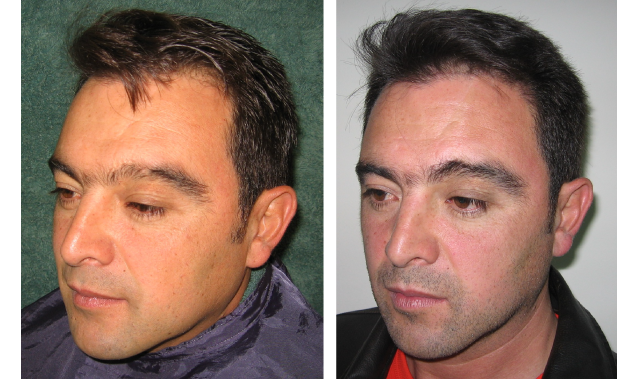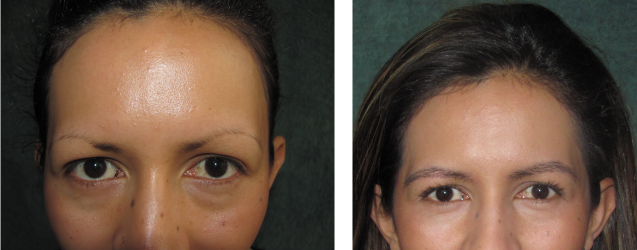Eyebrow transplants
Successful reconstruction depends on the ability of the surgeon to recreate the natural angle and orientation of each follicle, in the precise location, and the use of thin single-hair grafts in the follicular unit.
“The direction and angle of the eyebrow change according to the distance from the midline, a fundamental factor in the restoration”

Eyebrows can be lost by
1. Inheritance
2. Hormonal Changes (Childbirth, Contraceptives)
3. Diseases (Thyroid, Infections, Leprosy)
4. Pigmentation and Excess Makeup
5. Traumatic
6. For Medications
7. Alopecia Areata
Eyebrow surgery is characterized by
1. Use autologous grafts (that is, from oneself, so there is no rejection, 100% growth)
2. Local anesthesia
3. Be an outpatient procedure with minimal disability (wear large glasses to protect yourself)
4. Durable
5. Natural
To be natural, follicular units of only one hair should be used per unit and follow the directions and angles of their growth.
The extraction of the follicles, like the transplants for baldness, can be extracted with the strip method or the single extraction method. Remember that planting with both techniques is the same.
Men have understood that their image is important to reflect who they are and it is not only a female issue, so the procedure is being widely requested by them. What many patients do is take advantage of the hair implant of the head to have the eyebrows implanted in the same session.
■ Indications
2. When you want to change the design (lengthen, thicken or raise them)
3. By scars
4. for tattoos or piercings
5. To repopulate them when they have been lost by disease or medications
PROCESS
- Preparation of the area where the grafts will be taken
- Preparation of the receiving area
- Follicle Implant
With local anesthesia and previous asepsis of the area, a strip of scalp 3 to 5 cm long and 0.5 to 1 cm wide is removed (or the desired number of follicles if extracted with FUE). The edges are sutured in two planes.
The extracted strip is divided under a microscope to separate the eyebrow grafts hair by hair.
The holes must be at the precise angle and direction to achieve true natural results.
The areas where they are going to be implanted are anesthetized and the holes are made with extra-fine punches.
On average, 100 to 250 follicular units are needed for a total brow reconstruction.
Once the holes have been made, a single-unit follicle is implanted in each one. The graft only enters the angle at which the incision was made, ensuring that it remains at the correct angle.
The day after surgery there may be a slight swelling in the eyelids that is temporary. On the second day, the outer edge of the follicle dries, forming a tiny crust that falls off in the first week. These days it is advisable to protect yourself from the sun, your own hands and the wind, so we recommend wearing large glasses.
After Eyebrow Reconstruction by follicular units, it is customary to do a check-up a week to remove the stitches.
The stem of the follicle (the hair that one sees, usually falls out during the first month after surgery. The root that was transplanted and that remained under the skin is what allows the new hair growth. The final results are normally seen between 5 and 12 months after surgery.



